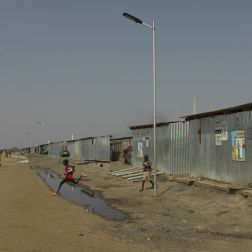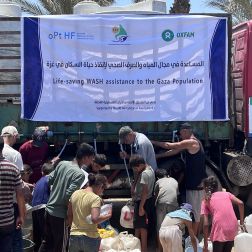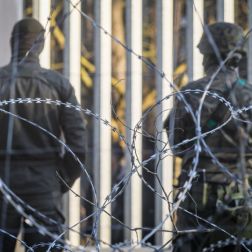- 5 mins read time
- Published: 14th March 2018
How can we go back to a Syria that no longer exists?
Authored by Shaheen Chughtai, Head of Campaigns, Policy & Communications, Oxfam Syria Crisis Response
Seven long years after the Syria crisis began, the situation remains bleak. Individual children, women and men continue to bear the brunt of a conflict marked by enormous human suffering, relentless destruction and a blatant disregard for human rights.
The harrowing news from Eastern Ghouta – the scene of intensified fighting in Syria’s brutal conflict – has pushed the war into the headlines again. Recent fighting in other areas, including Afrin, Idlib and Deir Ez-Zor continues to claim lives and leave families in desperate need of aid. During this protracted crisis, the broken lives of Syria’s women, men and children have too often been ignored.

Left: Hani*, 16, was displaced from East Ghouta in 2013, and now lives in a tent with his family of 8 in Herjalleh, Rural Damascus. Photo: Dania Kareh / Oxfam. Right: Wael* and Husam* return back from their daily journey to collect drinking water for their family from a nearby water fountain, Herjalleh.
While making a film about Syrian refugees in Lebanon and Jordan for Oxfam, I was truly humbled by the courage and resilience of the people I met. However, many are only just surviving amid harsh conditions.
One mother from Homs, Jawaher, told me: “Our houses are gone, how can I go back to something which doesn’t exist anymore?” Their homes in Syrian cities and towns continue to be pummelled into rubble, or are now occupied by strangers.
After seven years of conflict, the statistics are horrifying: at least 400,000 Syrians have been killed and over 13 million are in desperate need of humanitarian aid, including nearly three million people trapped in besieged and hard to reach areas, such as Eastern Ghouta. More than half of the population – nearly 12 million people – have fled from their homes, many of them several times. More than 5.6 million refugees are living in neighbouring countries, the majority in extreme poverty.
Jawaher, the refugee in Jordan who I interviewed for the film, told me her son had returned recently to Syria. From Idlib, he sends her text messages telling her the situation “is bad, very bad”. He has no heating despite the low temperatures and no aid has reached him yet. Aid agencies say they still cannot reach many people who need help.
Some aid does get through despite the challenges. Over the last year, Oxfam has helped an estimated two million people in Syria as well as refugees and the communities in which they are sheltering in Jordan and Lebanon. This has included providing safe drinking water, sanitation and vital food aid as well as helping refugees make a living.
Being a Syrian refugee is difficult, even if you manage to escape from Syria. Everyone who lives in the Jordanian capital, Amman, knows only too well about its high cost of living. Imagine being a Syrian refugee who needs to live, to eat, and to care for their children there. Despite efforts by the Jordanian authorities, many refugees – as well as members of the overstretched communities hosting them – are still unable to find work and rely on limited aid. This means the reality for many Syrian refugees, particularly the women in the region, is a life without meaningful work. What a terrible waste of talent.

Left: Ahmed, 34, a husband and a father of three children, is one of those who fled their homes fearing for their lives. Photo: Dania Kareh / Oxfam. Right: Layla, 35, is a mother of six little children. Her husband has been missing for about two years. Photo: Dania Kareh / Oxfam
One Syrian young refugee in Za’atari told us she is creating her own luck, developing her writing skills as a reporter for a magazine on the camp. Now 20, Abeer hopes she will return to Syria one day and she has made it her goal to give something back to her country because of the way ‘it has suffered and sacrificed’. She longs to write a story of Syrians rebuilding their country and starting over again. But how much longer will this conflict continue and at what cost? The international community has provided billions of dollars and euros in aid to the region in recent years. That welcome aid has helped to keep millions of Syrian refugees alive and alleviated their suffering – but it has not kept pace with the sheer scale of human need.
The continued violence, bloodshed and suffering in Syria represents a catastrophic failure by the international community. Attempts to reduce civilian loss of life and provide humanitarian aid to people trapped by the fighting have been repeatedly undermined by military operations.
Time is long overdue for world leaders to do more to protect and assist civilians and prioritise a political solution to the conflict. The people of Syria deserve no less.
See also our video ZA'ATARI: THE REFUGEE REPORTER
*Names have been changed to protect identities.




